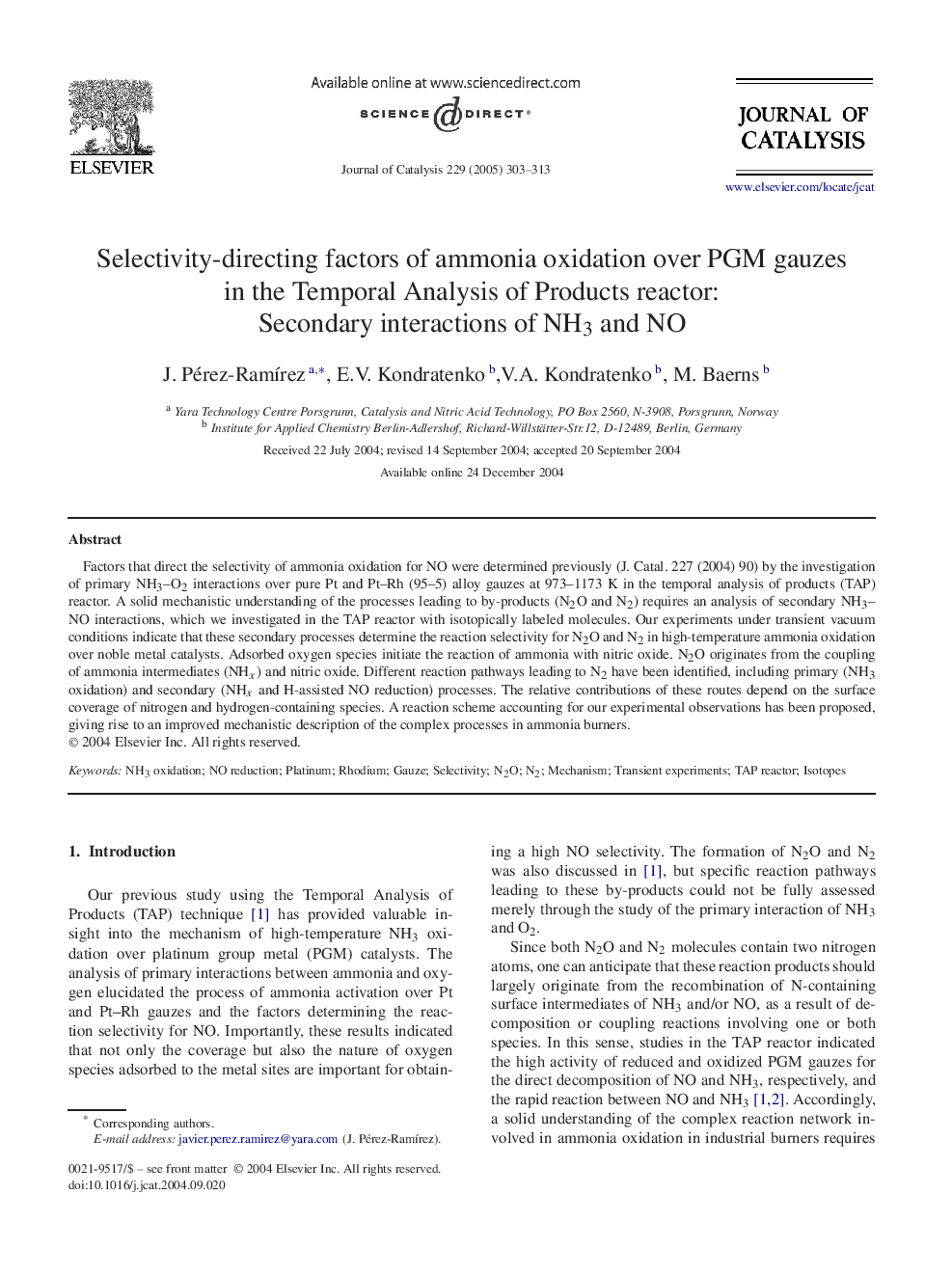| Article ID | Journal | Published Year | Pages | File Type |
|---|---|---|---|---|
| 10244797 | Journal of Catalysis | 2005 | 11 Pages |
Abstract
Factors that direct the selectivity of ammonia oxidation for NO were determined previously (J. Catal. 227 (2004) 90) by the investigation of primary NH3-O2 interactions over pure Pt and Pt-Rh (95-5) alloy gauzes at 973-1173 K in the temporal analysis of products (TAP) reactor. A solid mechanistic understanding of the processes leading to by-products (N2O and N2) requires an analysis of secondary NH3-NO interactions, which we investigated in the TAP reactor with isotopically labeled molecules. Our experiments under transient vacuum conditions indicate that these secondary processes determine the reaction selectivity for N2O and N2 in high-temperature ammonia oxidation over noble metal catalysts. Adsorbed oxygen species initiate the reaction of ammonia with nitric oxide. N2O originates from the coupling of ammonia intermediates (NHx) and nitric oxide. Different reaction pathways leading to N2 have been identified, including primary (NH3 oxidation) and secondary (NHx and H-assisted NO reduction) processes. The relative contributions of these routes depend on the surface coverage of nitrogen and hydrogen-containing species. A reaction scheme accounting for our experimental observations has been proposed, giving rise to an improved mechanistic description of the complex processes in ammonia burners.
Keywords
Related Topics
Physical Sciences and Engineering
Chemical Engineering
Catalysis
Authors
J. Pérez-RamÃrez, E.V. Kondratenko, V.A. Kondratenko, M. Baerns,
